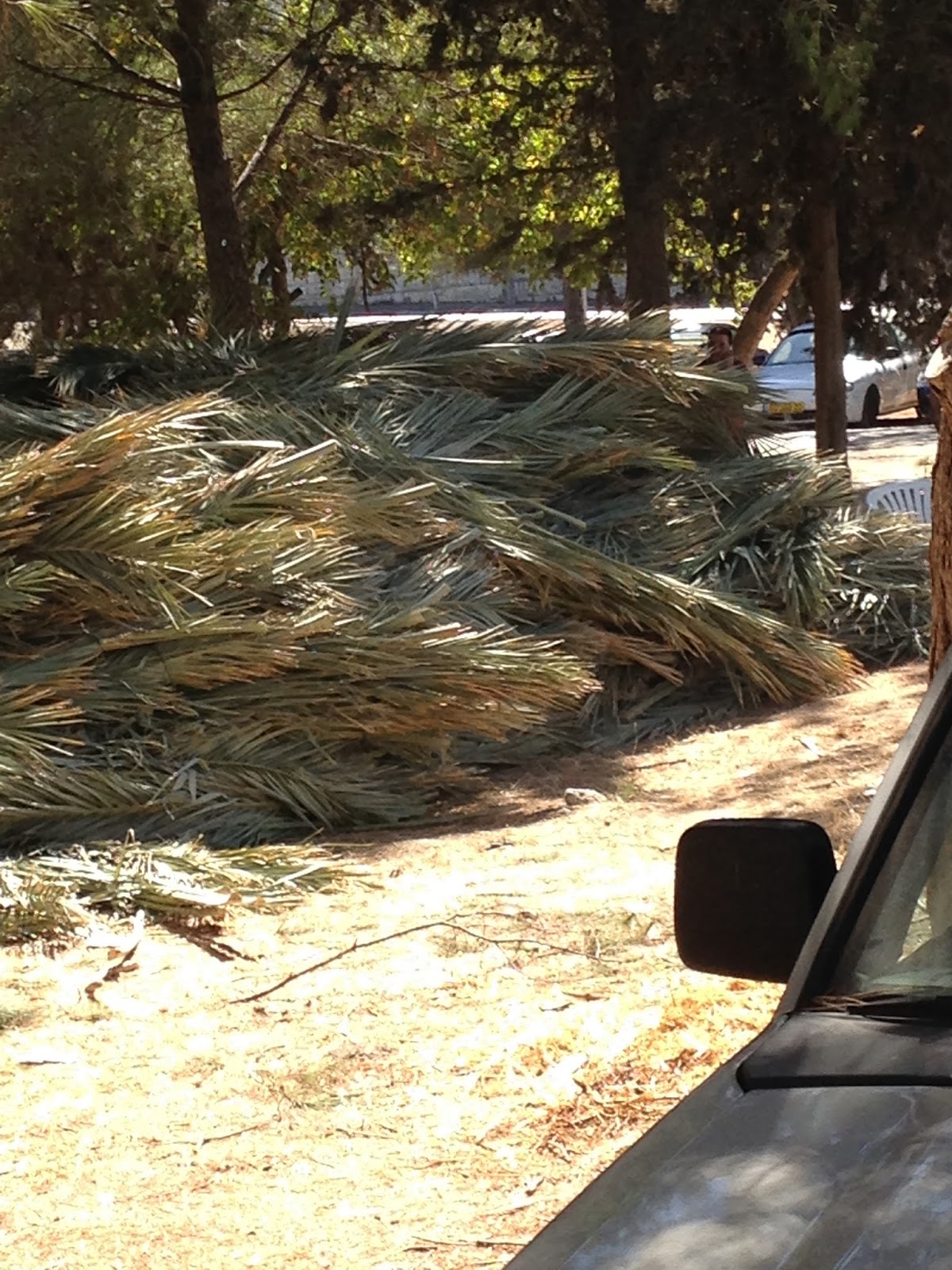Whoa! Sukkot is big. We really need a couple of blog posts to relate everything. Apologies in advance if even this first one is a bit long and/or rambling.
We wrote last time about how everyone and everything stops on Yom Kippur; even if they’re not observant the rest of the year -- maybe didn’t even go to shul for Rosh HaShannah -- no one is out as if it’s a regular day. Sukkot has a similar, albeit less engaged feel. People who might not typically live their daily lives by Jewish rhythms get caught up in Sukkot here. (Here’s a shot of the half dozen sukkot in our backyard).
You can get Sukkot all over the place. There were about five places within a five minute walk from our house. Think (l'havdil) Xmas trees at home: stands pop-up wherever there is an open lot.
We bought our’s near the gas station/24-hour market near our house and carried it home.
It was wonderful. It’s small (only 6x6) and individual tarps (instead of having to wrap one piece all the way around, like at home), both of which made setting it up so simple that it only took about ten minutes beginning to end.
You can get lulav and etrog all over the place, too. 
And not just the sukkah kits or arba minim, but everything else you could want is readily available. Like palm fronds
 ,
,
or sukkah lights
They were even selling sukkot, arba minim, and posters/sukkah decorations at our grocery store!
I do not think I can describe the grocery stores here to you. I am sending you a picture of our main grocery store, Osher Ad, right before Rosh Hashana but you can’t really see how the lines are a dozen deep and people sometimes have two carts filled to the top.
And sukkot is worse. We were told by Hannah’s friends the Engelharts that we need to buy chicken before the holiday because they do not schecht chickens over the chag and the country runs out of chickens. We didn’t actually see this, but the stores are madness. There is a lot of yelling in the lines at Osher Ad, but usually the person deserves it. There are unspoken rules of behavior when it takes you 45 minutes to an hour to check out of a grocery store and Israelis are not shy about enforcing unspoken rules. People just to talk to each other here as if they are part of your family, for better or worse. Yes, preparing for Sukkot was madness!
And that’s even with our being invited out for both meals on the first day of Sukkot. Dinner was at family from Nitzanim, Mary and Yonah Fuld (former head of SAR) with some of their friends. Great people, we had a wonderful time. Another great group for lunch, at the Pollocks with some old friends of theirs.
Everyone went their separate ways during Hol HaMoed. Hannah was a little under the weather (still run-down from Thailand?) and went back to Givat Shmuel to sleep for a couple of days straight. Zoe went up north for an overnight with her Bnai Akiva branch, and Sheryl and Seth went to Tel Aviv for a belated (20th. And 25th) anniversary get away. We'll pick up that story next time.
Enjoy the last day(s).
What happens in Israel...
